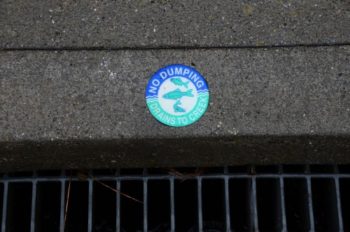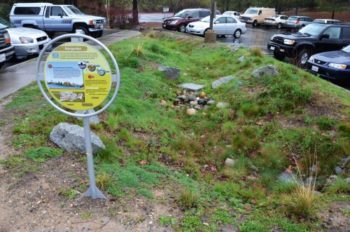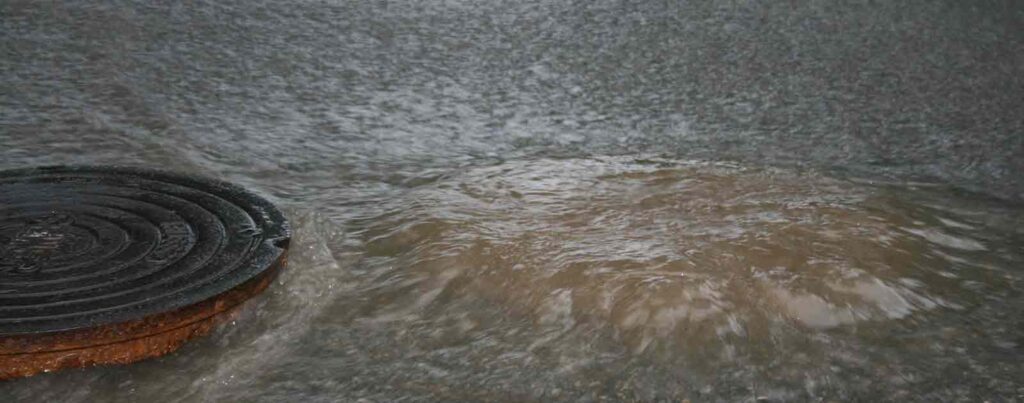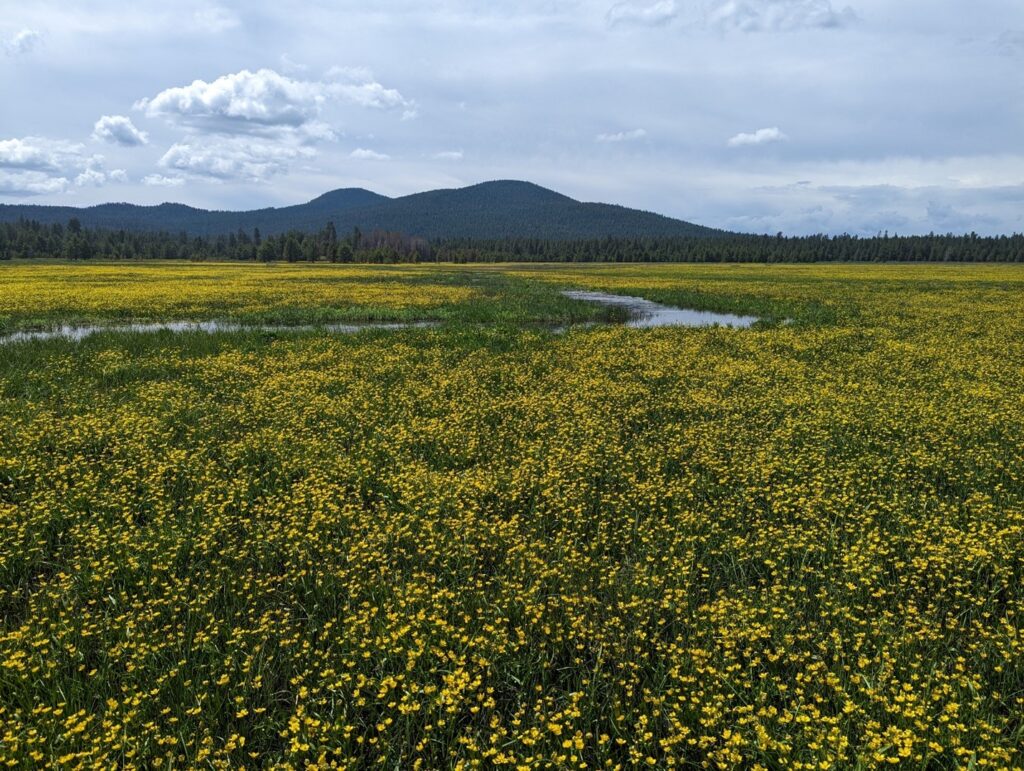Winter rain is starting to bring welcome relief to dehydrated California, but with an epic El Niño sending storm after storm our way, how do we prepare for too little water and too much all at once? Despite the historic and continuing drought, emergency response officials are already busy planning for floods and mudslides in the months to come.
How do we capture more water from this wet winter while diminishing floods? Slow that water down, and sink as much of it into the ground as we can.

Storm drains often pour straight into creeks and streams increasing flood risk downstream
In cities and towns, that means relying on green infrastructure like rain gardens to capture stormwater from our rooftops and streets.
For instance, the roof on a 30 by 30 foot building catches more than 500 gallons of water from just a single inch of rain. Those 500 gallons can go straight into the storm drain and contribute to flooding, or they can go into a rain garden to soak into the ground.
Much of the water will still make its way to nearby streams and rivers, but more slowly. Even better, if you have a rain barrel installed, that water can help meet your landscape water needs on the way.
That may not sound like a huge difference, but when you consider an entire neighborhood it adds up quickly.

This rain garden catches stormwater from a large parky lot and in Nevade City, CA and sinks it into the ground
Watch where water goes in your own neighborhood the next time it rains—are green spaces soaking up the water, or does it pour into storm drains? Working together with neighbors and encouraging your town to adopt green infrastructure practices wherever possible can make a big difference.
Where we point our stormwater can mean helping reduce the drought or dealing with a harsher winter floods.
Find out more about polluted runoff from storms and green infrastructure practices.






